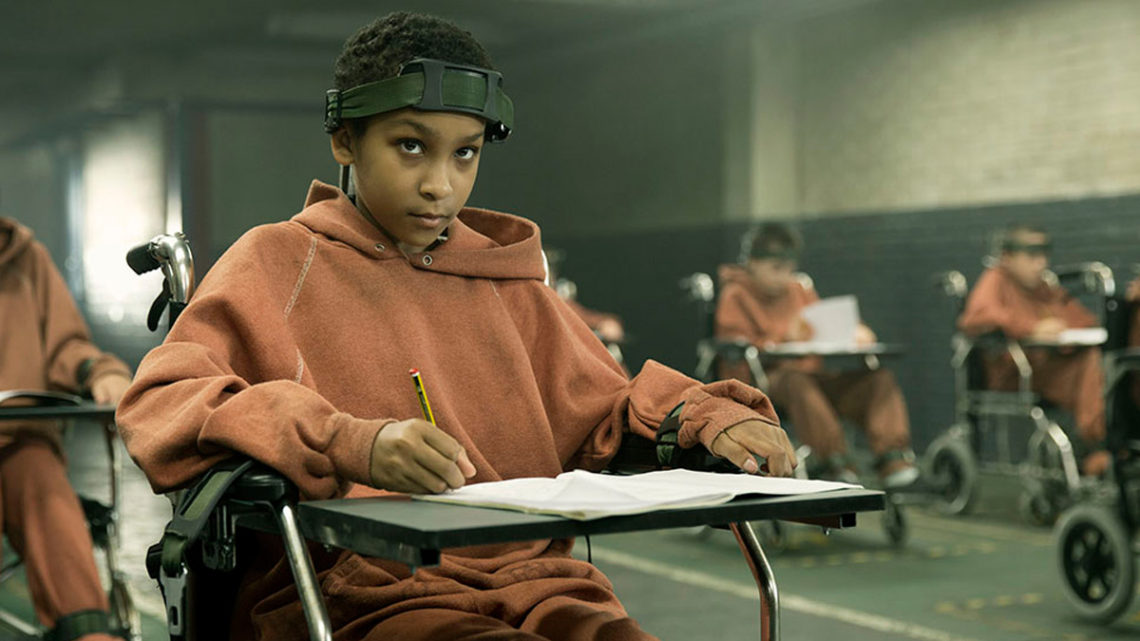I’ve grown tired of zombies. With The Walking Dead currently standing as AMC’s most watched show, the sub-genre has been tinkered with to death (un-death?) from straight retellings to comedic reinterpretations to zombified versions of already established properties (like Pride and Prejudice and Zombies and Afterlife with Archie). With undead fatigue having long set in, I approached The Girl with All the Gifts, the adaptation of the novel of the same name from director Colm McCarthy, with few expectations. McCarthy’s film surprises with a genuinely engaging take on these movie monsters, fusing an apocalyptic zombie flick with the best of the “special child” tropes borrowed from YA fiction.
Taking place sometime after the outbreak of a worldwide fungal infection that renders its human victims into undead flesh-eating monsters (here called “hungries”), The Girl with All the Gifts opens in a heavily armed UK researched facility, where captive zombified children study under the tutelage of a sympathetic school teacher Miss Justineau (Gemma Arterton) and are studied by the calculating Dr. Caldwell (Glenn Close). Caldwell is inching closer to a cure, believing the key to be one of her subjects, Melanie (Sennia Nanua), a preternaturally inquisitive young girl seemingly capable of independent thought outside her unending thirst for blood. When the facility is besieged by a horde of hungries, Caldwell, Justineau, and a coterie of military personnel (led by Paddy Considine) set out, with Melanie in tow.
Where traditionally, zombie hordes have been interpreted as allegories for societal mass consumption, here they’re regarded more philosophically. Before the hungries attack the lab, Caldwell tests Melanie with the concept of Schrodinger’s Cat as a logic conundrum about observable reality (that a cat in a sealed box is both dead and alive, until the box is opened to ascertain the truth). It becomes a dark parallel for Melanie herself, as her monstrous tendencies are somehow able to coexist with her intelligence and growing capacity for compassion; she is both dead and alive at the same time. At the same time, the fate of humanity hangs in a similar state of in-between-ness—the human race faces extinction, yet the existence of Melanie and other hungries like her hints at a different kind of future for the world. The Girl with All the Gifts plays less like a straight guts-and-gore horror film (though there’s plenty of that) and more like thought-provoking science fiction.
However, these virtues are native to the source material. Where the film falters is in McCarthy’s perfunctory direction. Best known for directing for the BBC, including episodes of Sherlock, Doctor Who, and Peaky Blinders, his The Girl with All the Gifts looks like a high-budget TV pilot, snappily moving from plot-point to plot-point through a grimy digital sheen. Thankfully, his heroine is a revelation. Sennia Nanua is endlessly watchable as Melanie. She manages to shine through a Hannibal Lecter-like muzzle, bright without ever becoming annoyingly precocious, creepily ferocious when her animal tendencies take over, and more than a match for Glenn Close’s steely gaze. Her performance is worth the price of a ticket.




















